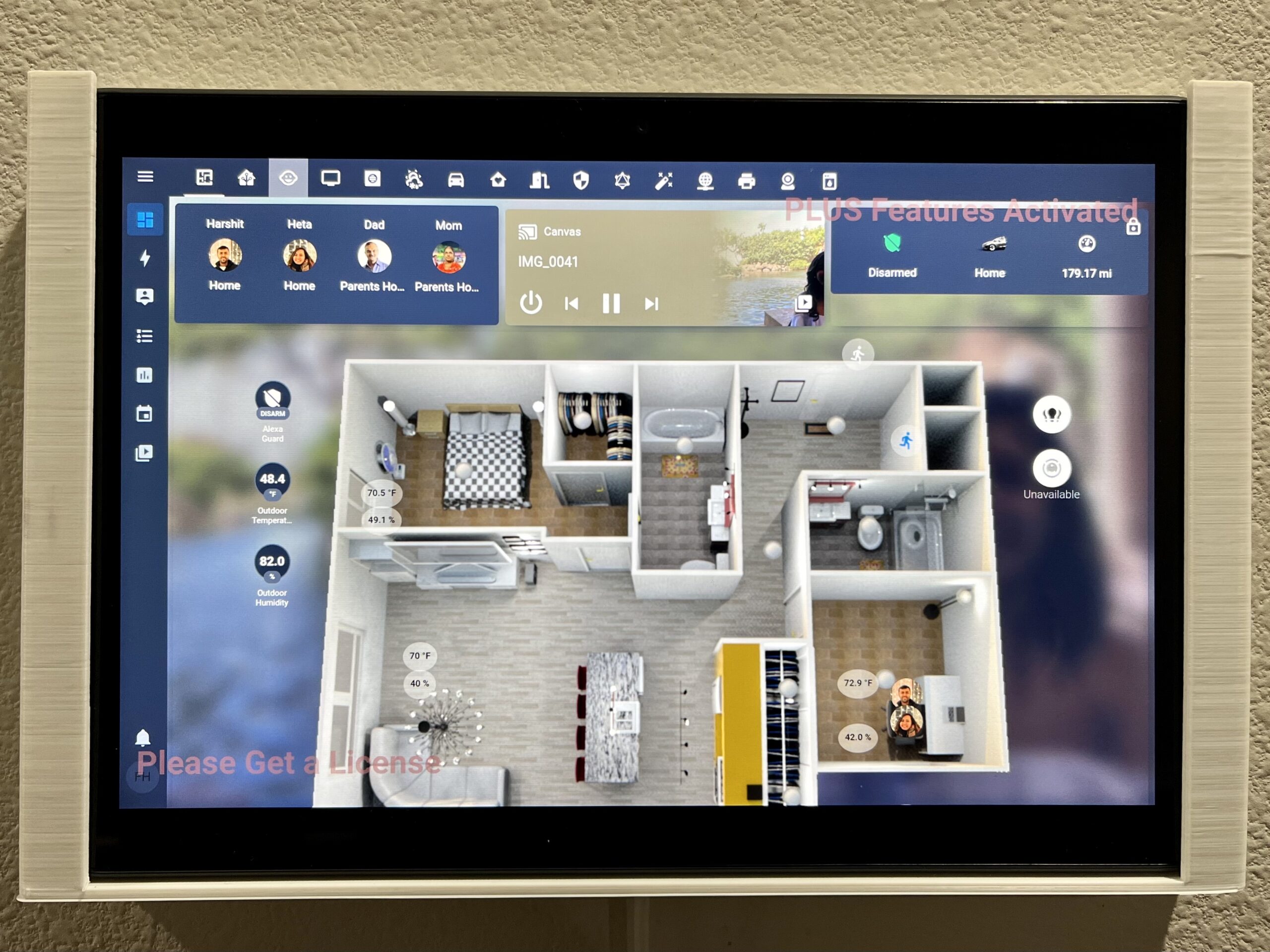Although this is a constant work in progress, I will try and summarize my home assistant setup. This will hopefully provide an overview of how I have organized the configurations and what custom components I use. My goal for this post is to help anyone get started with a basic setup and use my other posts on automation and themes to evolve their home assistant setup.
Getting Started
Follow the instructions at Home Assistant to get started. Once you have a working setup, head over to the Configurations page to learn how to make changes to your configurations.yaml file. With the newer versions of Home Assistant, you can get a lot of things done through UI. e.g. Adding integrations, changing themes, writing automations and scripts, etc. But there are still specific configurations you might have to add via YAML files. You can get started with some examples from Home Assistant Configuration Examples.
If reading is not your thing, here is my favorite youtube channel for getting started with Home Assistant
configuration.yaml
This is my most basic stripped-down version of the configuration.yaml.
# Configure a default setup of Home Assistant (frontend, api, etc)
default_config:
notify:
- platform: group
name: ios_family
services:
- service: mobile_app_harshits_iphone
- service: mobile_app_hetas_iphone
system_health:
frontend:
themes: !include_dir_merge_named themes
downloader:
download_dir: www/downloads
system_log:
fire_event: true
camera: !include cameras.yaml
history: !include history.yaml
logger: !include logger.yaml
recorder: !include recorder.yaml
logbook: !include logbook.yaml
sensor: !include sensors.yaml
switch: !include switches.yaml
influxdb: !include influxdb.yaml
group: !include groups.yaml
automation: !include automations.yaml
script: !include scripts.yaml
scene: !include scenes.yaml
binary_sensor: !include binary_sensors.yaml
input_boolean: !include input_booleans.yaml
input_number: !include input_numbers.yaml
input_select: !include input_selects.yaml
ios: !include ios.yaml
light: !include lights.yaml
File Tree
.
├── automations.yaml
├── binary_sensors.yaml
├── cameras.yaml
├── configuration.yaml
├── custom_components
│ ├── alexa_media
│ ├── anniversaries
│ ├── eero
│ ├── fontawesome
│ ├── fullykiosk
│ ├── hacs
│ ├── holidays
│ ├── mail_and_packages
│ ├── meural
│ ├── mila
│ ├── personalcapital
│ ├── redfin
│ ├── slack_user
│ ├── sonos_cloud
│ ├── tesla_custom
│ ├── weatheralerts
│ └── yahoofinance
├── customize.yaml
├── google_calendars.yaml
├── groups.yaml
├── history.yaml
├── home-assistant.log
├── home-assistant_v2.db
├── image
├── influxdb.yaml
├── input_booleans.yaml
├── input_numbers.yaml
├── input_selects.yaml
├── ios.yaml
├── known_devices.yaml
├── lights.yaml
├── logbook.yaml
├── logger.yaml
├── recorder.yaml
├── scenes.yaml
├── scripts.yaml
├── secrets.yaml
├── sensors.yaml
├── sounds
│ ├── dog-barking-2-bullmastiff.mp3
│ ├── doorbell-1.mp3
│ ├── german-shephard.mp3
│ ├── one-tone-chime.mp3
│ ├── twitter-chirp.mp3
│ └── two-tone-chime.mp3
├── switches.yaml
├── themes
│ ├── caule-themes-pack-1
│ ├── frontend.yaml.bak
│ ├── github_light_theme
│ ├── google_theme
│ ├── ios-dark-mode
│ ├── ios-themes
│ ├── midnight
│ ├── noctis
│ └── ux_goodie
├── tts
├── webostv.conf
├── workspace.code-workspace
├── www
│ ├── community
│ ├── custom-lovelace
│ ├── downloads
│ ├── floorplan
│ ├── images
│ ├── mail_and_packages
│ └── tmp
└── zigbee.dbYou can find more information about all the available configuration options at Home Assistant Integrations. I like to keep my configurations organized into separate files for each config. e.g. cameras.yaml, sensors.yaml, lights.yaml. In my other posts on automations and dashboards, I will share what config goes into which file, so you can easily replicate my automations.
Integrations
In addition to the components available from the home assistant core, I use HASS, which is a community store to manage all of my custom components, python scripts, themes, etc.
Stay tuned for my posts on Home Assistant automations and dashboards, where I go into more details about how I have set them up.

4 thoughts on “My Home Assistant Setup”